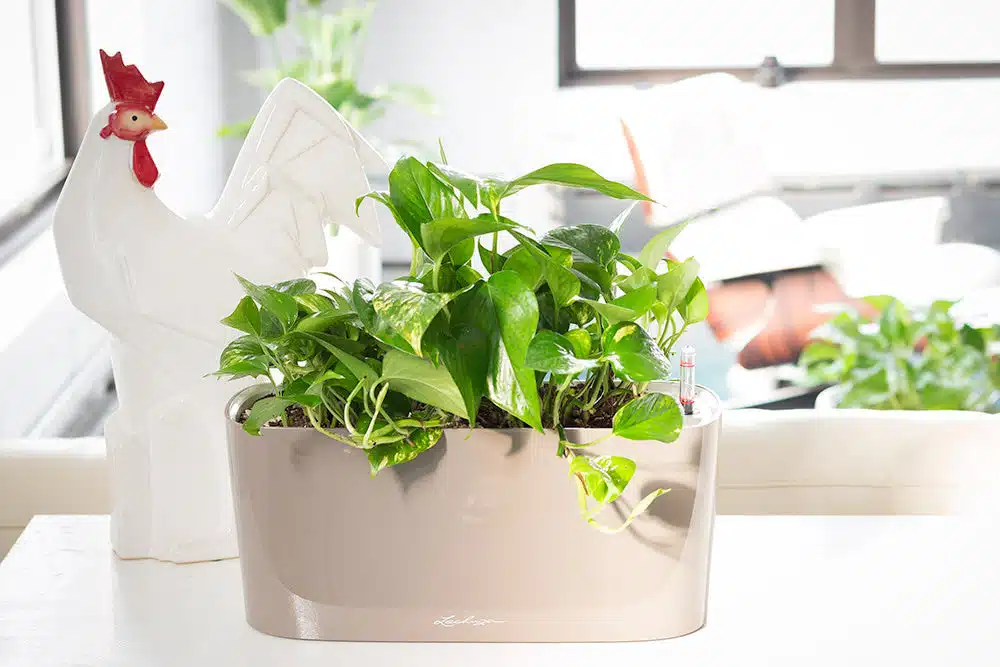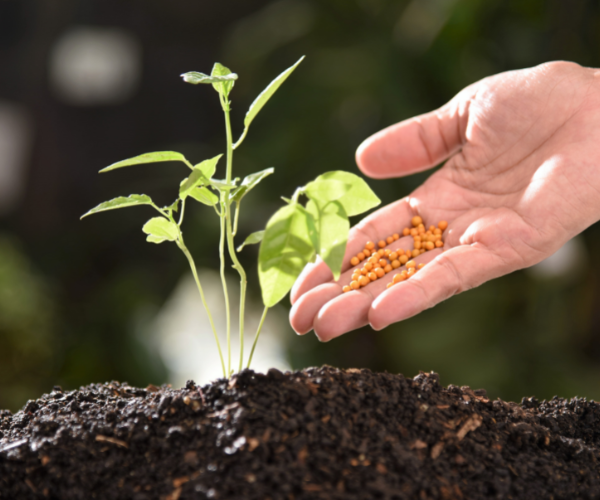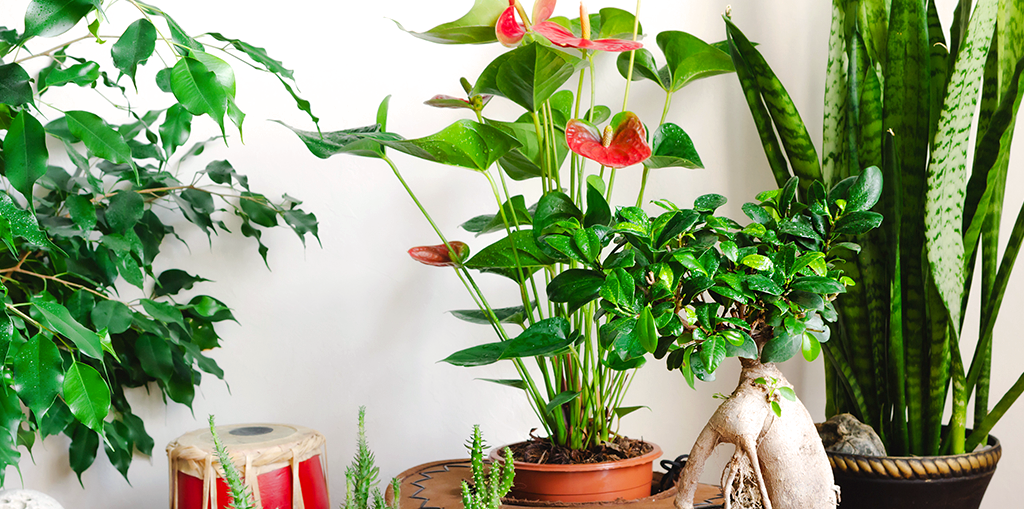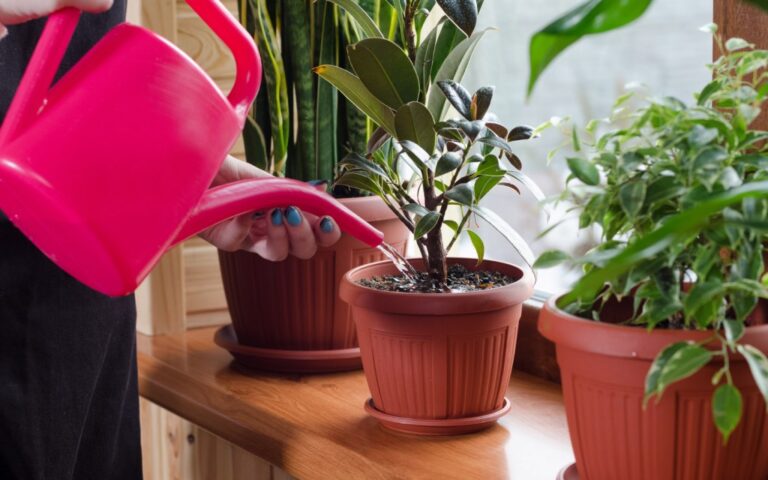Contents
Introduction
Taking care of indoor plants can be a rewarding and relaxing hobby, but when summer rolls around, it can become a bit tricky. The heat can be tough on your green friends, making it essential to prepare them properly for the warmer months. Preparing your indoor plants for summer heat is crucial because extreme temperatures can stress them out, leading to wilting, yellowing leaves, and even death. But don’t worry, with a few simple steps, you can keep your plants thriving all summer long.
So, why is it important to get your indoor plants ready for summer? Well, during the hot months, the conditions inside your home change significantly. The sunlight streaming through your windows gets stronger, and the air inside can become dry due to air conditioning. These changes can affect your plants, especially if they are not used to such conditions. By taking the time to prepare your plants, you can help them adjust to these changes, ensuring they stay healthy and beautiful.
One of the main benefits of preparing your indoor plants for summer is that it helps prevent heat stress. Just like us, plants can suffer from too much heat. When they get too hot, they can’t photosynthesize properly, which means they can’t produce the energy they need to grow. This can result in weak, unhappy plants that are more susceptible to pests and diseases. By making a few adjustments to their care routine, you can help your plants stay cool and happy.
Another great reason to prepare your plants for summer is that it can save you time and money in the long run. Healthy plants are less likely to suffer from issues like pests, diseases, and nutrient deficiencies, which means you’ll spend less time troubleshooting problems and more time enjoying your lush, green indoor garden. Plus, by keeping your plants in good shape, you won’t have to replace them as often, saving you money on new plants and supplies.
In this guide, we’ll cover everything you need to know about getting your indoor plants ready for the summer heat. We’ll discuss how to understand your plant’s needs, the steps to take to prepare them, specific care tips for different types of plants, and how to create a summer-friendly indoor environment. Whether you’re a seasoned plant parent or just starting, you’ll find plenty of practical tips and advice to help you keep your plants happy and healthy all summer long. So, let’s dive in and get your indoor garden ready for the sunny days ahead!
Understanding Plant Needs in Summer
When summer hits, your indoor plants’ needs change quite a bit. It’s important to understand these changes to keep your plants healthy and happy. Let’s break down what you need to know in simple terms.

Temperature Tolerance
First off, let’s talk about temperature. Different plants have different temperature tolerances. Most common indoor plants prefer temperatures between 65°F and 75°F. When the temperature rises above this range, plants can get stressed. You might notice signs like wilting, yellowing leaves, or slowed growth. If your plants look droopy or their leaves start turning crispy around the edges, they could be suffering from heat stress.
Light Requirements
Next up is light. During summer, the sun is stronger and the days are longer. This means your plants might get more light than they need. Too much direct sunlight can scorch their leaves, causing brown spots or bleached areas. To prevent this, you might need to move your plants away from windows or use sheer curtains to diffuse the sunlight. Some plants, like succulents, love bright light, while others, like ferns, prefer indirect light. It’s important to know what kind of light your plants need and adjust their placement accordingly.
Watering Needs
Watering is another key factor. In summer, the heat causes water to evaporate more quickly, both from the soil and the plant’s leaves. This means your plants might need more frequent watering. However, overwatering can be just as harmful as underwatering. A good rule of thumb is to check the soil moisture before watering. Stick your finger an inch or two into the soil; if it feels dry, it’s time to water. Look out for signs of overwatering, like yellowing leaves or a musty smell coming from the soil.
Humidity Management
Finally, let’s talk about humidity. Indoor air can get really dry in the summer, especially if you’re using air conditioning. Most indoor plants prefer a bit of humidity. You can increase humidity around your plants by misting them with water, using a humidifier, or placing a tray of water near them. Grouping plants together can also help create a more humid microenvironment.
By understanding these basic needs—temperature, light, watering, and humidity—you’ll be better equipped to keep your indoor plants happy and healthy during the summer months. Up next, we’ll dive into specific steps you can take to prepare your plants for the heat.
Steps to Prepare Your Plants
Now that you know what your plants need in the summer, let’s talk about the specific steps you can take to prepare them for the heat. With a few simple adjustments, you can help your plants thrive even during the hottest months.
Adjusting Light Exposure
One of the first things to do is adjust your plants’ light exposure. Summer sun can be intense, and too much direct sunlight can harm your plants. Here’s what you can do:
- Identify plants that are sensitive to direct sunlight. Plants like ferns and peace lilies prefer indirect light, while succulents and cacti can handle more direct sunlight.
- Use sheer curtains or blinds to diffuse the light coming through your windows. This can help prevent your plants from getting scorched.
- Rotate your plants every few days to ensure even light exposure. This helps all parts of the plant get the light they need without one side getting too much.
Optimizing Watering Schedule
Watering is crucial during the summer, as plants tend to dry out faster. Here’s how to optimize your watering routine:
- Increase the frequency of watering based on your plant type and size. Larger plants and those in bigger pots may need more water.
- Water your plants early in the morning or late in the evening. This helps reduce water evaporation and allows plants to absorb moisture more efficiently.
- Use deep watering techniques, where you water the soil thoroughly until it reaches the roots. This encourages deeper root growth and helps plants withstand heat better.
Humidity Management
Maintaining the right humidity level is important, especially if you live in a dry climate or use air conditioning. Here are some tips:
- Increase indoor humidity by using a humidifier. This can help keep the air moist around your plants.
- Place a tray filled with water and pebbles near your plants. As the water evaporates, it increases humidity in the immediate area.
- Mist your plants regularly, especially tropical varieties that thrive in humid conditions. However, be careful not to overdo it, as too much moisture can lead to mold or mildew.
Soil and Fertilization
Healthy soil and proper fertilization are key to helping your plants cope with summer heat. Here’s what to consider:

- Check the soil moisture and drainage regularly. Make sure your pots have drainage holes to prevent waterlogging.
- Consider adding soil amendments like compost or peat moss to improve soil structure and retain moisture.
- Adjust your fertilization routine to support active growth periods. During the summer, many plants are in their growing season and can benefit from a balanced, water-soluble fertilizer.
By following these steps, you can create an optimal environment for your indoor plants to flourish during the summer. Next, we’ll cover specific care tips for different types of plants to ensure they stay healthy and vibrant all season long.
Specific Plant Care Tips
Different types of plants have unique needs, especially when it comes to handling summer heat. Here are some specific care tips for a few popular categories of indoor plants to help you keep them healthy and happy.
Succulents and Cacti
Succulents and cacti are well-known for their heat tolerance, but they still need some special care in the summer:
- Heat Tolerance and Minimal Water Needs: These plants thrive in hot conditions but can suffer from too much heat if they’re exposed to intense, direct sunlight for prolonged periods. It’s best to give them bright, indirect light or place them in a spot that gets morning sun and afternoon shade.
- Avoiding Sunburn and Proper Soil Mix: Even though succulents and cacti love the sun, they can get sunburned. If you see white or brown patches on their leaves, it means they’re getting too much direct sunlight. Move them to a less intense light spot. Also, make sure they are planted in a well-draining soil mix to prevent root rot.
Tropical Plants
Tropical plants like monstera, philodendrons, and ferns need a bit more attention during the summer:

- High Humidity Requirements and Frequent Watering: These plants thrive in high humidity. Mist them regularly or use a humidifier to keep the air around them moist. They also need more frequent watering during the summer, but be careful not to overwater.
- Placement in Bright, Indirect Light: Tropical plants prefer bright, indirect light. Too much direct sunlight can scorch their leaves, so keep them in a spot where they get plenty of filtered light.
Flowering Plants
Flowering plants like orchids, African violets, and peace lilies can bring a burst of color to your indoor garden, but they need some extra care in the heat:
- Encouraging Blooms with Proper Care: To encourage blooms, make sure your flowering plants get the right amount of light. Most need bright, indirect light. Deadhead spent flowers to encourage new blooms.
- Pruning and Deadheading to Promote Growth: Regularly prune any dead or yellowing leaves and spent flowers. This not only makes your plant look better but also promotes new growth and blooming.
By following these specific care tips, you can ensure that your succulents, tropical plants, and flowering plants stay vibrant and healthy throughout the summer. Up next, we’ll discuss preventive measures against pests and diseases that can affect your plants during the warmer months.
Preventive Measures Against Pests and Diseases
Summer heat can create the perfect conditions for pests and diseases to thrive, so it’s essential to take preventive measures to keep your indoor plants healthy. Here’s how to protect your green friends from common summer pests and diseases.
Common Summer Pests
During the summer, pests like aphids, spider mites, and mealybugs can become a real problem. Here’s how to identify and deal with them:
- Identifying Aphids, Spider Mites, and Other Pests: Check your plants regularly for signs of pests. Aphids are small, green or black insects that cluster on new growth. Spider mites are tiny and often leave fine webbing on the undersides of leaves. Mealybugs look like tiny cotton balls.
- Natural and Chemical Control Methods: Start with natural remedies like spraying your plants with a mixture of water and a few drops of dish soap or neem oil. You can also wipe down the leaves with a damp cloth. If the infestation is severe, consider using a chemical insecticide, but always follow the instructions carefully to avoid harming your plants.
Disease Prevention
Hot and humid conditions can also lead to fungal and bacterial infections in your plants. Here’s how to prevent and manage them:
- Recognizing Signs of Fungal and Bacterial Infections: Look for spots, mold, or a musty smell on your plants. Fungal infections often appear as white or gray powdery spots on leaves, while bacterial infections can cause black or brown patches.
- Maintaining Cleanliness and Proper Air Circulation: Keep your plants clean by removing any dead or yellowing leaves. Make sure there’s good air circulation around your plants to prevent moisture buildup, which can lead to mold and mildew. You can use a small fan to help with this.
By staying vigilant and taking these preventive measures, you can keep pests and diseases at bay, ensuring your plants stay healthy throughout the summer. Next, we’ll cover how to monitor and adjust your plant care routine as needed.
Monitoring and Adjusting Care
Keeping an eye on your plants and being flexible with your care routine is crucial for their health, especially during the summer heat. Here’s how to effectively monitor your plants and adjust their care as needed.
Regular Inspections
Regularly checking your plants helps catch any issues early, ensuring they stay healthy:
- Checking for Signs of Stress, Pests, and Diseases: Inspect your plants every few days for any signs of stress like wilting, yellowing leaves, or drooping. Look for pests on the undersides of leaves and along the stems. Early detection can prevent bigger problems later on.
- Keeping a Plant Care Journal: Maintain a journal to track your plants’ health and care routine. Note down when you water, fertilize, or move your plants. This helps you identify patterns and adjust care as needed.
Adapting to Environmental Changes
Summer weather can be unpredictable, and indoor conditions can change too. Here’s how to adapt:
- Responding to Fluctuations in Temperature and Humidity: Pay attention to changes in temperature and humidity levels in your home. If the temperature rises or the air becomes drier, adjust your care routine accordingly. For example, increase misting or move plants away from direct sunlight during heatwaves.
- Adjusting Care Routines as Needed: Be flexible with your watering schedule and light exposure. If your plants seem stressed despite your best efforts, try changing their location, adjusting the watering frequency, or increasing humidity.
By regularly monitoring your plants and being ready to adjust their care, you can ensure they remain healthy and vibrant all summer long. Up next, we’ll discuss how to create a summer-friendly indoor environment that supports your plants’ well-being.
Creating a Summer-Friendly Indoor Environment
Creating an environment that supports your plants during the summer is essential for their health and growth. Here’s how to make your home more plant-friendly when the heat is on.
Ventilation and Airflow
Good air circulation is vital for keeping your plants healthy:
- Importance of Good Air Circulation: Proper airflow helps prevent fungal diseases and keeps pests at bay. It also ensures that your plants get the fresh air they need to thrive.
- Using Fans and Open Windows: Use fans to circulate air around your plants, especially in rooms that tend to get stuffy. Opening windows on cooler days can also help bring in fresh air and improve ventilation.
Indoor Climate Control
Maintaining a stable indoor climate can make a big difference for your plants:
- Using Air Conditioning Wisely: Air conditioning can help keep your home cool, but it can also dry out the air. Place plants away from direct airflow to prevent them from drying out. Use a humidifier to counteract the dry air if needed.
- Balancing Indoor Climate with Plant Needs: Monitor the temperature and humidity levels in your home. Aim to keep the temperature within a comfortable range for your plants, typically between 65°F and 75°F, and maintain a humidity level that suits their needs.
Reducing Heat Sources
Minimizing sources of excess heat can help keep your plants cooler:
- Moving Plants Away from Heat-Generating Appliances: Appliances like ovens, stoves, and even some electronics can generate heat. Keep your plants away from these heat sources to prevent them from getting too warm.
- Insulating Plant Pots to Keep Roots Cool: Consider using insulated pots or placing a layer of mulch on top of the soil to keep the roots cool. You can also place pots inside decorative containers to provide an extra layer of insulation.
By optimizing ventilation, managing the indoor climate, and reducing heat sources, you can create a comfortable environment for your plants to thrive during the summer. Next, we’ll wrap up with a summary of key points and some final tips for keeping your plants healthy and happy.
Conclusion
As we wrap up, let’s recap the essential points to ensure your indoor plants stay healthy and vibrant all summer long.
Recap of Key Points
Preparing your indoor plants for summer heat involves several important steps:
- Understanding Plant Needs: Know your plants’ temperature, light, watering, and humidity requirements.
- Adjusting Care Routines: Modify light exposure, watering schedules, and humidity levels to suit the summer climate.
- Specific Plant Care Tips: Provide tailored care for succulents, tropical plants, and flowering plants to ensure they thrive.
- Preventive Measures: Regularly check for pests and diseases and take steps to prevent them.
- Monitoring and Adjusting: Keep a close eye on your plants and be ready to adjust their care as needed.
- Creating a Summer-Friendly Environment: Ensure good ventilation, control the indoor climate, and reduce heat sources to keep your plants comfortable.
Long-Term Benefits
Taking the time to prepare your indoor plants for summer has long-term benefits:
- Healthier Plants: Well-cared-for plants are more resilient to stress, pests, and diseases.
- Cost Savings: Healthy plants mean fewer replacements and less spending on treatments and remedies.
- Enjoyment: A thriving indoor garden enhances your living space and provides joy and relaxation.
Final Tips and Encouragement
Here are a few final tips to keep your plants happy:
- Stay Consistent: Regular care and attention go a long way in maintaining plant health.
- Stay Informed: Keep learning about your plants and stay updated on best practices for plant care.
- Enjoy the Process: Caring for plants should be enjoyable. Take pleasure in watching them grow and flourish.
With these tips and a little bit of effort, your indoor plants can thrive even during the hottest summer months. Happy gardening!
Resources
For more information and support, check out these resources:
- Recommended Reading: Books and articles on indoor plant care.
- Useful Tools and Products: Humidifiers, watering cans, soil meters, and more.
- Online Communities and Support: Forums, social media groups, and local plant societies where you can connect with other plant enthusiasts.



